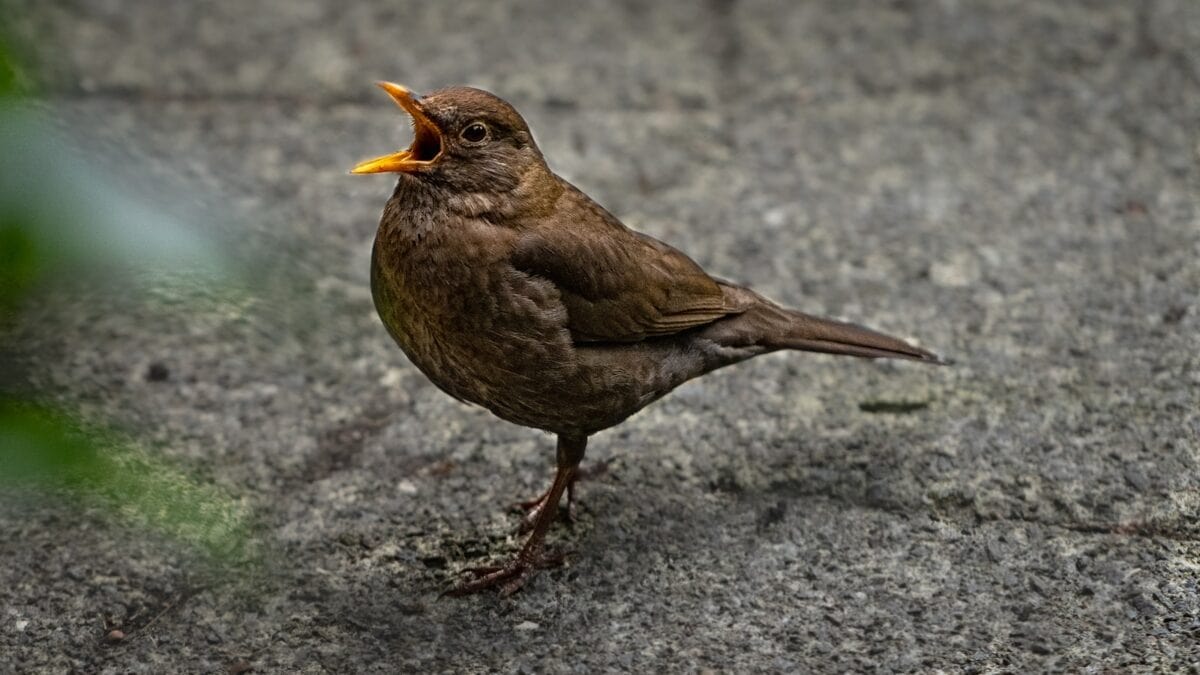The bustling symphony of city life, with its cacophony of car horns, construction, and the general hum of human activity, presents both challenges and opportunities for urban wildlife. Among the many creatures inhabiting these urban jungles, birds stand out not only for their resilience but also for their remarkable adaptability. One fascinating aspect of this adaptation is how some birds have begun changing their songs to ensure their survival amid urban noise. This article delves into the innovative ways in which birds adapt their vocalizations to thrive in noisy cityscapes.
Understanding Birdsong: A Symphony of Communication

Birdsong is more than mere melody; it’s a critical tool for communication. Birds use songs to attract mates, defend territories, and signal danger. Each species has its unique set of calls and songs, with variations that can denote regional populations or even individual identities.
The Impact of Urban Noise on Birdsong

Urban landscapes are bustling with noise pollution, which can drown out the subtle nuances of birdsong. This modern noise can interfere with the communication vital for breeding, territory establishment, and survival. As a result, some birds are forced to modify their vocalizations to penetrate the urban din.
The Clever Adaptations of Urban Birds

Researchers have noted that some city birds are singing at higher pitches to cut through the low-frequency rumble of traffic. Others are adjusting the timing of their calls, opting for quieter hours or over shorter distances to reduce overlap with human-made noises. These adaptations highlight the impressive flexibility and resilience of avian species.
Case Study: The Song of the City Sparrow

Recent studies have shown that city-dwelling sparrows tend to sing louder and at higher frequencies than their rural counterparts. This adaptation ensures that their calls are not drowned out by city noise, swiftly grabbed attention from mates, and effectively marked territories amid urban chaos.
The Role of the Dawn Chorus

Dawn is typically quieter than other parts of the day, which provides birds with an excellent opportunity to communicate without much acoustic interference. Some birds have adjusted their singing patterns to take greater advantage of this time, ensuring their song travels farther and clearer.
Challenges of Noisy Mates

A potential side effect of singing louder involves increased energy expenditure, leaving birds more vulnerable to predators and exhaustion. Additionally, not all birds can adapt quickly, which might impact populations that are slower to change their vocalizations.
Noise Pollution: A Global Concern for Wildlife

As cities continue to grow, noise pollution is becoming an increasing concern for ecologists and conservationists. Not only does it affect birds, but it has also been shown to impact other wildlife, leading to disrupted mating rituals and altered behavior patterns.
Research Methods in Monitoring Birdsong

Scientists utilize various methods to study how birds adapt their songs. Acoustic monitoring, for example, helps researchers capture and analyze the differences in birdsong between urban and rural environments. Advances in technology are making it easier to gather and interpret this data effectively.
The Importance of Green Spaces in Urban Areas

Green spaces such as parks and gardens serve as critical habitats for birds, offering refuge and quieter areas where they can communicate more naturally. These spaces can mitigate some adverse effects of urban noise, allowing birds a buffer from the surrounding clamour.
Community Efforts in Noise Reduction

Community-led initiatives to reduce noise pollution can have positive outcomes for urban wildlife. Simple measures, like limiting construction noise during peak bird activity times and creating more quiet zones in cities, can contribute significantly to improving urban birds’ living conditions.
Promoting Awareness and Conservation

Building awareness about the impact of urban noise on bird populations can lead to more conservation-conscious urban planning. Educating city dwellers on the importance of bird habitats and the role they play in urban ecosystems encourages community support for policies that protect birds.
The Future of Birds in Urban Landscapes

The story of birds adapting their songs for survival demonstrates nature’s extraordinary capacity for change. While humans continue to shape and expand urban environments, both individuals and communities can support efforts to accommodate and protect urban wildlife.
In conclusion, the ability of birds to adapt their songs to survive amidst city noise is a testament to their resilience and the intricate balance of life. As city residents and policymakers recognize the importance of accommodating urban wildlife, there is hope that birds will continue to sing, even amid the hustle and bustle of urban life. As stewards of the environment, it is our responsibility to make room for these vocal virtuosos, ensuring that their songs endure as a part of our shared urban landscape.
- 11 Wild Animals You Won’t Believe Are Living in Your Backyard - August 20, 2025
- How Birds Navigate Thousands of Miles Without GPS - August 20, 2025
- The Bizarre Migration of Nebraska’s Snapping Turtles—And Why It’s So Important - August 20, 2025

